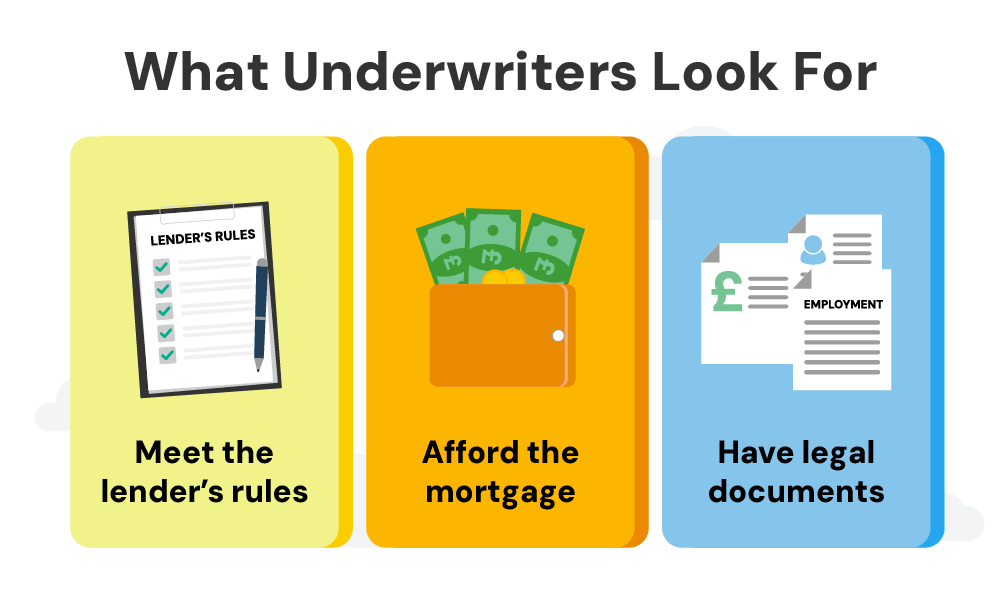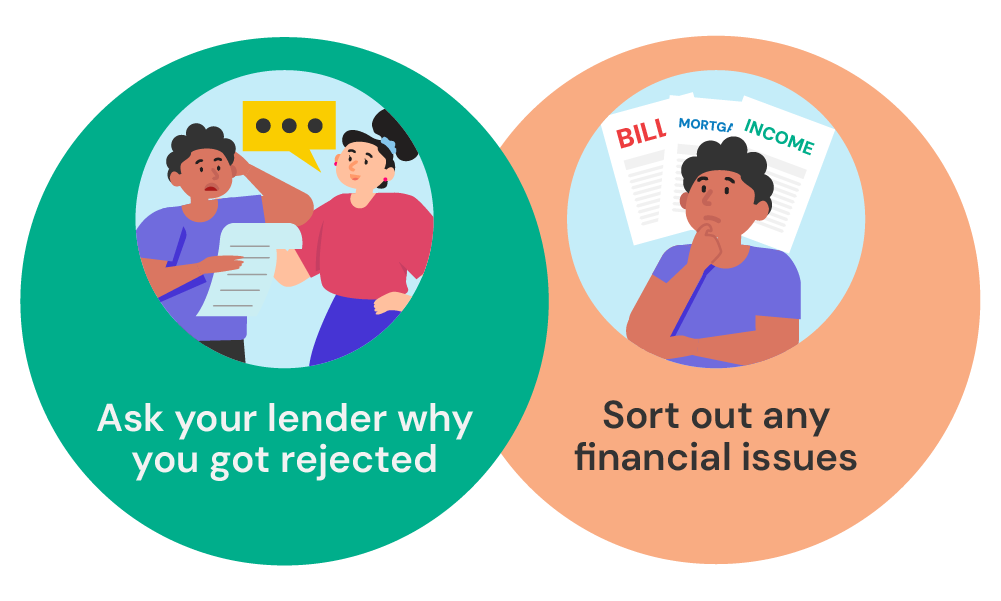- What is Underwriting?
- What is Underwriting in Mortgage?
- What Do Underwriters Look For in a Mortgage?
- How Does the Underwriting Process Work?
- How Long Does Underwriting Take?
- At What Stage is Underwriting in the Mortgage Process?
- What Can Go Wrong in Underwriting?
- How To Improve Mortgage Underwriting Success?
- What Happens After Underwriting?
- Key Takeaways
- The Bottom Line
Mortgage Underwriting: What You Need To Know

Applying for a mortgage can feel like starting a grand adventure. It’s exciting, a bit daunting, and filled with unknowns.
One of the most crucial stages in this journey is mortgage underwriting.
This process determines whether you can become a homeowner, yet it often remains a mystery for many buyers.
In this guide, you’ll learn how to prepare for mortgage underwriting, what to expect, and how to boost your chances of a successful application.
What is Underwriting?
Underwriting is the process lenders use to assess the risk of lending you money. This concept isn’t limited to mortgages; it’s used in insurance, investments, and other financial products.
When you apply for any type of loan or insurance, underwriters spring into action. They meticulously analyse your financial situation, considering factors like your income, assets, and credit history.
Their goal? To determine if you’re a good bet for the lender or insurer.
What is Underwriting in Mortgage?
In the context of mortgages, underwriting takes on a specific and crucial role.
Mortgage underwriting is the process by which a lender assesses the risk of lending money to a potential homebuyer.
It’s the final step in your journey to get a mortgage, and it can feel like the most nerve-wracking part of the home-buying process.
During mortgage underwriting, a specialised professional known as a mortgage underwriter takes a deep dive into your finances.
They look beyond your credit score and current salary. Their aim is to build a complete picture of your financial health and ability to repay the loan over a long period, sometimes 25 years or more.
This process isn’t just about protecting the lender, though. It’s also a way to ensure you, the borrower, don’t take on a debt you can’t handle.
After all, a mortgage is likely the biggest financial commitment you’ll ever make, so it’s best for everyone if it’s manageable.

What Do Underwriters Look For in a Mortgage?
When you apply for a mortgage, you’re essentially asking a lender to trust you with a BIG loan.
To make sure they’re making a wise decision, mortgage underwriters will thoroughly examine your finances.
Here’s what they’re after:
- Your Income – Underwriters want to see that you have a steady, reliable income that covers your mortgage payments and other bills. They’ll typically look at your employment history, checking for any gaps or frequent job changes that might indicate instability.
- Debt-to-Income Ratio – This is a crucial metric that compares your monthly debt payments to your monthly income. In the UK, lenders typically prefer this ratio to be below 36-40%, though exact requirements can vary. Calculate your DTI ratio here to see your mortgage options.
- Credit History – Your credit score is important, but underwriters will look beyond just the number. They’ll check your credit report in detail, looking for any red flags like late payments, defaults, or County Court Judgments (CCJs).
- Assets and Savings – Underwriters want to see you have enough saved for your deposit and other buying costs. They’ll also look at your overall financial picture, including any investments or other assets you might have.
- Property Valuation – The underwriter will review the property valuation to ensure that the loan amount is appropriate for the property’s value. This protects the lender if they need to repossess and sell the property.
- Deposit Source – They’ll want to know where your deposit is coming from. If it’s a gift from family, for instance, they may require a letter confirming that it’s not a loan that needs to be repaid.
- Employment Verification – Expect the underwriter to contact your employer to verify your employment status and income.
Basically, the lender will assess two main things: can you afford the mortgage, and is the property a good investment for them?
To answer these questions, they’ll check your income stability, spending habits (through your debt-to-income ratio and credit history), and savings.
They’ll also verify the property value and make sure your deposit comes from a legitimate source.

How Does the Underwriting Process Work?
The underwriting process might seem mysterious, but it follows a fairly standard procedure.
Here’s a step-by-step breakdown of what typically happens:
- Application Submission – This is where you provide all the necessary documentation, including proof of income, bank statements, and details about the property you want to buy.
- Initial Review – A loan officer or mortgage broker will do a preliminary check of your application to ensure all required documents are present and that you meet the basic criteria for the loan.
- Credit Check – The lender will pull your credit report and score from one or more of the UK’s credit reference agencies – Experian, Equifax, and TransUnion.
- Automated Underwriting – Many lenders use automated underwriting systems as a first pass. These systems use algorithms to assess risk based on the information provided.
- Manual Underwriting – A human underwriter then takes over, reviewing the results of the automated system and digging deeper into your financial situation.
- Additional Documentation – If the underwriter spots any issues or has questions, they may request additional documentation from you. This is quite common, so don’t be alarmed if it happens.
- Property Appraisal – The lender will arrange for a professional valuation of the property to ensure it’s worth the amount you’re borrowing.
- Final Decision – After reviewing all the information, the underwriter will make a decision. They might approve the loan, deny it, or approve it with conditions that need to be met before final approval.
How Long Does Underwriting Take?
The million-pound question: how long will all this take? The truth is, the duration of the underwriting process can vary.
On average, it typically takes between 3-14 working days. However, this can extend to a few weeks if your case is complex or if the lender requests additional information.
Here’s a more detailed breakdown:
- Initial Review (1-3 Days). The lender’s team reviews your application and gathers initial documents. They check for completeness and any obvious issues.
- Document Verification (2-5 Days). The underwriter verifies all submitted documents, such as pay stubs, bank statements, and tax returns. This step ensures all information is accurate and up to date.
- Credit Analysis and Risk Assessment (2-4 Days). The underwriter examines your credit report and assesses your financial stability and risk level. They look at your credit score, payment history, and debt-to-income ratio.
- Decision Making (1-2 Days). Based on their findings, the underwriter makes a decision. They may approve, deny, or request additional information or conditions to be met.
Factors that can affect the timeline include:
- The complexity of your financial situation
- The type of mortgage you’re applying for
- How quickly you respond to requests for additional information
- The lender’s current workload
Remember, while waiting can be frustrating, a thorough underwriting process is in your best interest. It ensures you’re getting a mortgage that’s truly suitable for your circumstances.
At What Stage is Underwriting in the Mortgage Process?
Underwriting is one of the final stages in the mortgage process, but it’s not the very last step.
Here’s a typical sequence of events in a UK mortgage application:
- Initial Enquiry and Advice – You discuss your needs with a mortgage advisor or broker.
- Agreement in Principle (AIP) – Also known as a Decision in Principle, this is a preliminary check of your eligibility.
- Property Search and Offer – You find a property and have your offer accepted.
- Full Mortgage Application – You submit a complete application with all required documentation.
- Valuation – The lender arranges a valuation of the property.
- Underwriting – This is where the detailed assessment of your application takes place.
- Mortgage Offer – If underwriting is successful, the lender issues a formal mortgage offer.
- Exchange of Contracts – You and the seller exchange signed contracts.
- Completion – The funds are transferred, and you become the legal owner of the property.
As you can see, underwriting occurs relatively late in the process, but it’s not the final step. It’s the crucial stage that determines whether you’ll receive a formal mortgage offer.
What Can Go Wrong in Underwriting?
While many mortgage applications sail through underwriting, sometimes issues can arise.
Here are some common reasons why a mortgage might be declined by an underwriter:
- Poor credit history – Late payments, defaults, or County Court Judgments (CCJs) can raise red flags.
- Insufficient income – If the underwriter feels your income isn’t enough to cover the mortgage payments comfortably, they may decline the application.
- High debt-to-income ratio – If too much of your income is going towards existing debts, it might concern the underwriter.
- Employment instability – Recent job changes or gaps in employment can be problematic.
- Property issues – If the property valuation comes back lower than expected or there are structural problems, it could affect the underwriting decision.
- Incomplete or inaccurate information – Discrepancies in your application or missing documents can lead to delays or rejection.
If your mortgage is declined by the underwriter, don’t panic. Ask for feedback on why the decision was made.
Sometimes, it’s possible to address the issues and reapply, either with the same lender or a different one.

How To Improve Mortgage Underwriting Success?
Here are some ways to help you achieve a smooth and successful underwriting experience:
- Be honest and upfront. Provide accurate information from the start. Trying to hide financial issues will likely backfire.
- Respond quickly. If the underwriter requests additional information, provide it as soon as possible.
- Don’t make major financial changes. Avoid taking on new debts or making large purchases during the mortgage process.
- Maintain your employment. Try to avoid changing jobs if possible, as employment stability is important to underwriters.
- Keep your documents organised. Have all your financial documents ready and easily accessible.
- Consider using a mortgage broker. They can help you prepare your application and may have insights into different lenders’ underwriting criteria.
What Happens After Underwriting?
If your application successfully passes through underwriting, congratulations! You’re on the home stretch.
The lender will issue a formal mortgage offer, detailing the terms of your loan. From here, you can move forward with finalising your property purchase.
However, it’s important to note that even after underwriting approval, your finances will be checked again just before completion.
Any significant changes to your situation could still affect your mortgage. So, maintain your financial stability right up until you get the keys to your new home.
Key Takeaways
- Underwriting is the process where lenders assess your financial situation and the property’s value to decide if they’ll approve your mortgage.
- Factors that might stop your application include low income, high debt-to-income ratio, poor credit history, job instability, and property issues.
- To improve your chances, be honest on your application, respond quickly to any requests, avoid major financial changes, and maintain stable employment.
The Bottom Line
Mortgage underwriting is a vital step when buying a house, protecting both you and the lender. It might seem scary, but understanding what they look for and the process itself can make it smoother.
The key is to be prepared. Get your finances in order, gather all the documents needed, and be honest and thorough on your application.
This will greatly improve your chances of a hassle-free underwriting process.
If you hit any roadblocks, don’t despair. Often, extra information or explanations can fix things.
And if your application gets declined, use the feedback to improve your finances for next time.
Consider using a whole-of-market broker too. They have access to many mortgage deals from different lenders, not just a few.
This can be a huge help, as they can find the best rates for your specific situation. They can also offer expert advice, handle a lot of the paperwork, and even deal with any problems during underwriting, making the whole process less stressful for you.

Buying a home is a big achievement, and while underwriting can be nerve-wracking, it’s there to make sure you can afford the mortgage.
With some patience, preparation, and maybe help from a whole-of-market broker, you’ll be well on your way to owning your new home.
Need a good broker? Get in touch with us. We’ll connect you with a qualified mortgage broker to help in your mortgage application.
Get Matched With Your Dream Mortgage Advisor...

Frequently asked questions
Can I appeal if my mortgage is declined by the underwriter?
While there’s no formal appeals process, you can ask the lender to reconsider if you believe the decision was made in error or if you have new information that could change the outcome.
Alternatively, you might consider applying with a different lender or working with a mortgage broker who can guide you to lenders more likely to approve your application.
How often do mortgages fall through at the underwriting stage?
While exact statistics aren’t readily available, it’s not uncommon for issues to arise during underwriting. However, many of these can be resolved with additional information or explanation.
If you were pre-approved and honest on your application, a complete rejection is less likely.
Will the underwriter contact me directly?
In most cases, the underwriter will communicate with you through your mortgage broker or the lender’s customer service team. Direct contact from an underwriter is relatively rare.
Is automated underwriting as thorough as manual underwriting?
Automated underwriting systems are sophisticated and can process applications quickly.
However, most lenders use a combination of automated and manual underwriting to ensure a thorough assessment, especially for more complex applications.
Can I speed up the underwriting process?
While you can’t control the lender’s internal processes, you can help things move more quickly by responding promptly to any requests for information and ensuring your initial application is as complete and accurate as possible.
This article has been fact checked
This article was created, checked, and verified by the expert team at Money Saving Guru. Trust us, you’re in good hands.




